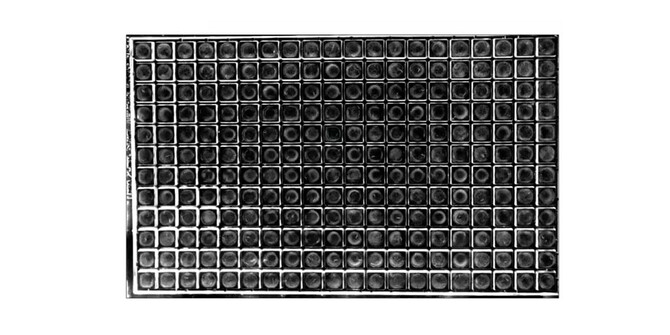Penn Engineers Develop the “WorMotel,” Simultaneously Study the Aging Process in Thousands of Model Organisms
The roundworm C. elegans is one of the most important model organisms in biological research. With a transparent, millimeter-long body containing only about a thousand cells and a lifespan of a few weeks, there is no better way of deciphering the role of a given gene on a living creature’s anatomy or behavior. In addition, many of the genes discovered in the worm have been shown to have similar roles in other animals and humans.
In the era of big data, however, a single worm isn’t enough. Thousands upon thousands of individual organisms are necessary to compare many different genes and ensure the reliability of experimental results.
Engineers at the University of Pennsylvania have taken strides to make this type of high-throughput experiment feasible by developing a system they have dubbed “the WorMotel.” To demonstrate its effectiveness, the researchers have studied the role of a set of mutations and stress-inducing drugs on the aging of 1,935 of these organisms, specifically, what percentage of their lifespans they remain healthy and active.The WorMotel system features index-card-sized plates made out of a transparent polymer. Each plate features 240 individual wells, in which a single worm lives its entire life. Automated systems keep them fed and stimulated while machine vision algorithms track and record their behavior.
The WorMotel system is also designed to be highly scalable. Robotic carousels can automatically swap hundreds of WorMotel plates in and out of analysis chambers, studying up to 57,600 worms in a single experiment.
The study, published in the journal eLife, was led by Christopher Fang-Yen, Wilf Family Term Assistant Professor in Bioengineering in Penn’s School of Engineering and Applied Science, and Matthew Churgin, a former graduate student (now a postdoctoral fellow) in his lab. They collaborated with David Raizen, an Associate Professor of Neurology in Penn’s Perelman School of Medicine. Former Fang-Yen lab members Sang-Kyu Jung, Chih-Chieh (Jay) Yu, and Xiangmei Chen also contributed to the research.
“Keeping the worms in isolated WorMotel wells allows us to monitor not just the lifespan of each worm but the behavior and health of each animal over time,” Fang-Yen said. “That along with the high-throughput nature of the system are the most important strengths of the method. We are taking a method that usually requires a great deal of manual labor, inspecting and counting single worms every day, and automating it.“
“The worms have about 20,000 genes in their genome, similar to humans,” Churgin said,” If you really wanted to see which genes influence something like aging, you’d want to test them all — have 20,000 different groups of worms, each with a different gene removed.”
“You need about 100 animals per group, so that’s roughly 2 million worms,” he said. Such an experiment would be nearly impossible using standard measurement techniques. “But with the WorMotel, we could do all of those experiments within a few years.”
The researchers are interested in studying not just lifespan, but “healthspan” — the span of the organisms’ lives in which they are robust and active. Different individual C. elegans within a population exhibit variations in lifespan. Comparing these populations to those with mutations in an aging-related gene showed that, in both cases, the shorter-lived worms spent more of their lives relatively healthy.
Research in this area could eventually be applied to questions about human aging, where staving off the physical and cognitive declines of old age might be preferable to simply increasing lifespan.
In addition to investigating genes involved in lifespan and healthspan, the WorMotel can be used for screening large numbers of drugs for their effects on aging. The Fang-Yen laboratory is currently working through collaborations to perform such a screen.
The research was supported by the National Institutes of Health (R01-NS-084835 and R01-NS-088432), Ellison Medical Foundation (AG-NS-1109–13), European Commission (633589) and Alfred P. Sloan Foundation (BR2012–084).








